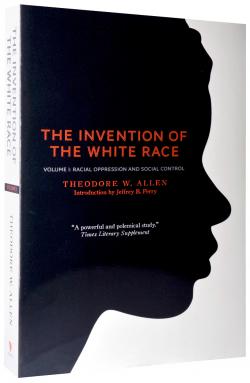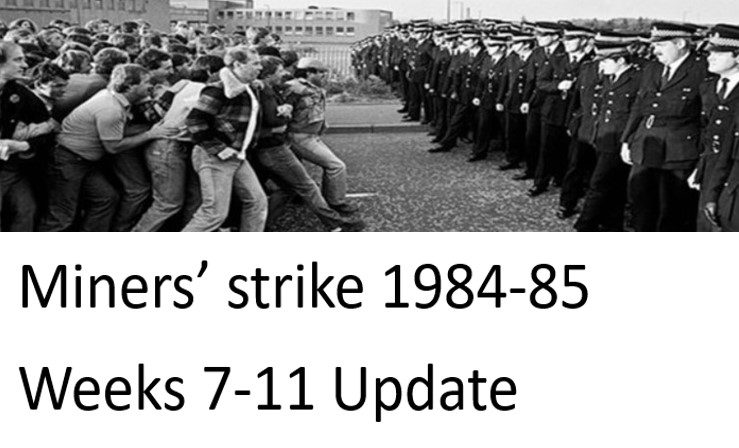By Richard Mellor in California
I would be interested in what people think of Theodore Allen’s work on racial slavery in the US and the origins of the “white race” ideology. It is crucial to understand this history, in my opinion, and why a great revolutionary like Malcom X can assert that “You can’t have capitalism without racism.”, if we are to fight racism and escape the madness of the so-called free market.
Many liberal academics, black and white, who would consider themselves radicals or even socialists, rarely mention this quote of Malcom X because they don’t really agree with it; his nationalist period is more useful to them as it doesn’t threaten capitalism. The goal of their radicalism is to advance their class interests, that social layer between the white racist ruling class and the multi-racial, far more numerous and powerful working class, within the framework of capitalism. This is especially so of the black section of this class who do not have the numbers or social weight of whites, being denied access to it for centuries. They also do not have the many links to the white ruling class for the same reason.
Global movement against racist policing
And it is the revolutionary potential of the black working class that they fear the most. At the head of the present global movement against police or state security violence that has become much more, are the black workers and youth in the US.
While Malcolm X doesn’t specifically offer socialism as the alternative, he certainly placed it on the table and was clearly moving in that direction in the latter part of his life, as was Martin Luther King Jr. More importantly, what flows from Malcom X’s profound statement on the subject, is that to rid society of racism, we have to eliminate capitalism and the only conclusion we can draw from this is that we cannot overthrow capitalism without working class unity. I say this because I personally believe it is only the working that has the social weight and the most to gain from doing so.
The working class, including the millions abandoned by capitalism, the unemployed or underemployed, and those incarcerated in US prisons, is the most powerful and integrated force in society, strategically positioned within the capitalist mode of production to bring it to a halt and ultimately transform society. The US 1%, to use the term popularized during the Occupy Movement, is aware of this powerful force and threatened by it.
The ruling class relies on this intermedite layer, what has historically been referred to as the petit-bourgeois or middle class, whether as small capitalists, members of academia, or the professions or Hollywood or professional sports figures, etc, to act as a buffer between itself and the growing pauperism of the working class in an era of the decay of capitalism. The class struggle is nothing but the battle between capitalists as the owners of wealth and wage workers whose life activity actually produces it.
It is not an accident that here in the US, the working class is referred to as the middle class. Workers even describe themselves in this way and it is normally a reference to income, as opposed to the social role in production. We are encouraged to make it into this “middle class” , as it is a touted as a symbol of our success, ingenuity and hard work. Unions are praised, not because they strengthen the economic power and political potential of the workers as a distinct class, but because they can offer us a pathway into the middle class.
Here in the US we have the rich, the middle class and the poor. We are led to believe that there are no ‘workers’ here, although this view is changing rapidly as in the last analysis, consciousness is a product of material conditions. The mass capitalist media can’t convince you that you are not poor, but it can convince you that it is your fault you’re poor.
Whiteness as a racial definition had a purpose
So if we are going to discuss racism and in particular, the issue of “whiteness”, white privilege and so on, we cannot do so devoid of class content. We have to understand how this idea of whiteness as a racial definition arose in the US; how it supplanted the class question and for what purpose. In other words, we have to approach it with class in mind and with the intention of uniting the working class whose unity and social power is harmed by it.
In the introduction to Class Struggle and the Origins of Racial Slavery: the Invention of the White Race (a synopsis of Allen’s book, available here as a PDF), Jeffrey Perry points out that Theodore Allen argued that, “the logic of ‘race as a social construct’ must be tightened and the focus sharpened” and “the ‘white race’ must be understood, not simply as a social construct (rather than a genetic phenomenon), but as a ruling class social control formation.”
Two main arguments undermining the struggle
Perry adds that this is consistent with “Allen’s repeated efforts to challenge what he considered to be the two main arguments that undermine and disarm the struggle against white supremacy in the working class”, namely:
1.That racism is innate, and
2. That European-American workers benefit from racism.
In the Invention of the White Race Allen goes further, though as Perry points out, “Allen’s new theory is built, as he explains, on “three essential bearing-
points” that challenge both Jordan and Morgan and “from which it cannot be toppled”:
Ruinous consequences for all workers
“First, racial slavery and white supremacy in this country was a ruling-class response to a problem of labor solidarity. Second, a system of racial privileges for white workers was deliberately instituted in order to define and establish the “white race” as a social control formation. Third, the consequence was not only ruinous to the interests of the Afro-American workers but was also “disastrous” . . . for the white worker.”
I do not intend to write a thesis here, as I’ve never written one and wouldn’t know how, but the definitive moment for Allen in the history of the Anglo-American colonies and the use of the term “white” as a racial definition, arose as a result of what became known as Bacon’s Rebellion in 1676, in which both black and white labour eventually found a voice. (As an aside, I strongly recommend reading chapter three of Lerone Bennett Junior’s The Shaping of Black America on this)
This rebellion did not begin this way, but all movements have a motion of their own at times, and this rebellion led to the sacking of Jamestown and it threatened the rule of the plantation elite in the relatively new colony of Virginia. Prior to this change, the labour supply was referred to as either Negro and Englishman, or Negro and Irishman, and so on.
Historians often write of this history as if there were no class distinctions between colonists; they were all just “white” people, but that identity had not then arisen. The colonial expeditions and the mercantile capitalists and/or landowners that led them and the labour they imported, were financed by the Virginia Company.
Class role in introducing slavery is obscured
The approach to history that is devoid of class struggle is quite acceptable to the white racist ruling class, because their central role in the introduction of chattel slavery and the racist history of the US is obscured, and the white worker is then blamed for their ‘inherent hatred’ of those with darker skin.
The liberal middle class academic – and let’s remember, universities are capitalist think tanks – thrive on this, as they can avoid their own class privilege in contrast to the white worker and wax eloquent about how racist the white worker is. “If only they’d read my books”, they think. In fact, more often than not, white liberals of this type prove how non-racist they are by attacking white workers as the culprits and the force behind the whole schema.
Yet racism is far more entrenched in this middle class layer and it is through this layer that the ideology of the 1%: selfish individualism, patriarchy, racial superiority, and the argument that their successes in the capitalist world are due to their own individual efforts, are brought in to the working class through the education system, the pulpit, the media, and so on.
I have to raise this issue yet again because I have come across another trendy analysis of racism from a white liberal academic who, like so many others, is doing quite well writing books about racism, dripping with morality and attempts at psychoanalysis and about how “white people” must accept they are racist and admit their white privilege in order to escape it.
‘White fragility’ and middle class academics
I sat through a couple of nauseating videos as Robin DiAngelo, who coined the term “white fragility”, droned on about how white people get uncomfortable when the race issue is mentioned and so on, which is true. But why do they and what can be done about it?
Privileged white middle class academics like DiAngelo, see it as their role to educate the masses, to help us understand what they think we fail to understand. DiAngelo claims to have been white and poor,which may be true but if she had an ounce of class consciousness at all as a worker, it has been eradicated in the morass of the university milieu and her successful book business.
These types claim that white workers need to discover and accept that they have white skin privilege and they will help us discover that. That’s part of the arrogance of this class. There is not a class-conscious white worker who doesn’t know that being white in the US is an advantage. If they tell you otherwise, they are lying to you. Ask them if they think they’d be better off if they were black and see what they say!
After it was published in 2018, Robin DiAngelo’s White Fragility received fawning reviews from The New Yorker and Publishers Weekly. They will certainly lie when they are approached by people like DiAngelo with the “White Fragility” playbook. They will act differently, however, when we approach this issue with the class question in the forefront.
Nothing they fear more than being called ‘racist’
The privileged white middle class in academia is incapable of this because they really have nothing but contempt for the white working class, They actually feel the same way about black workers but there’s nothing they fear more than being called racist and their assault on white workers proves how ‘non-racist’ they are, you see.
Robin DiAngelo’s books won’t help overcome the reluctance of white workers to discuss racism with people like her. It’s unfortunate that many well-intentioned whites from the middle class will be drawn to what is a failed approach in the real world. Robin DiAngelo’s world-view will undermine efforts to unite workers against the system that oppresses all workers, and will drive some white workers further to the right and ultimately undermine the struggle against racism on the job and in society.
Not knowing what “white fragility”, was I asked a black friend who had been to university but who is solidly rooted in the working class. I shared one of the videos I had watched which is here. I told her I didn’t agree with this approach at all and she jokingly said “See, you’re defensive when it comes to discussing racism. You prove her point”.
That’s it! What a great deal this approach is for DiAngelo’s book business. If you question her position at all, it confirms how right she is and how ‘racist white’ people are.
July 7, 2020



